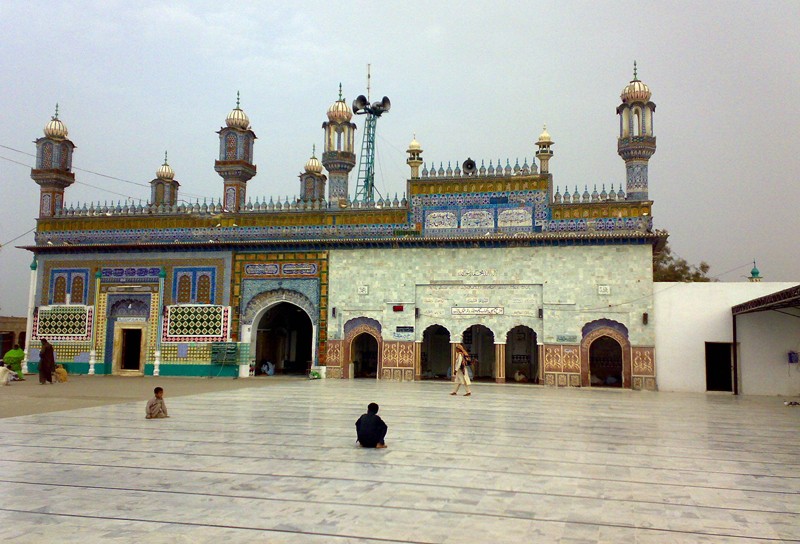
Torn between an uncertain past and a precarious present

Part I
Jhang is one of the oldest districts of Punjab which once enjoyed prominence because of the folk tales associated with it, its green topography, the alluvial texture of its soil and, lastly, its unique situation between two rivers, Chenab and Jhelum.
In order to qualify the assertion about Jhang as an old district, the reference to the accounts of the Greek historians Arrian and Curtius along with the Chinese pilgrim Hwen Thsang are extremely pertinent. These sources allude to Jhang’s very remote history going back to the fourth century B.C., when the region had its first taste of marauders at the hands of Alexander in 327 B.C.
Despite Jhang’s ancient past, the documented sources with some validity do not go back beyond the eighteenth century when the Siyal rule was firmly in place. History of Jhang can be pieced together since the rule of Walidad Khan Siyal who ruled the area from 1717-1747. Before that point, the history of the area is shrouded in darkness.
Jhang remained a co-traveller with the rest of Punjab through the vicissitudes of history like the Sikh rule and then the annexation of the province by the British in 1849. British annexation brought certainty and order in Jhang which made it possible for the institutions to be established. Under the British, its socio-cultural landscape largely remained cohesive despite demographic and religious divergences. That pattern continued in the post colonial era, despite a few incidences occurring in isolation. Most of its population has been Sunni Muslim but one devoted to an intercessional version of Islam, in which the Sufi saint is sacralised as the intermediary between man and God. Therefore, the saint and shrine have been central in the religious expression of the people of Jhang. But things changed since the 1980s.
From the 1980s onwards, Jhang became synonymous with sectarian militancy, displacing the long standing cultural eclecticism, sectarian mutuality and compassion amply symbolised in the romantic tales of Heer and Ranjha and the poetry of Sultan Bahu. Love and romance were substituted with hatred, and peace with tit for tat killing.
Even though a semblance of calm has been restored for the past few years, Jhang city is not what it used to be, like in the 1970s. The afflictions of internecine struggle between the two leading sects will take an awful lot of time to mitigate. The religious differences once come to a head produce social paranoia spiced with exclusion and xenophobia and the case of Jhang is illustrative of such a trend.
The abominable spell of such a regressive trend was cast on everything including an age-old institution like the Officers’ Club. While sitting in the Officers Club opposite DCO’s office, where a marriage ceremony was being solemnised, some of the city’s prominent people mentioned social apathy and institutional decay as the two ailments besetting the whole country and obviously Jhang is no exception. Mehr Afzal Khan Sial, a top lawyer and markedly influential among the gentry of the district, narrowed down his focus of analysis even further by pointing at the sordid state of the Officers Club as a site of analysis. He reminisced about the club during the 1960s and ’70s with lush green lawns and tennis courts. Established in 1927 with official patronage and financial support of the affluent sections of the district, the club provided the city’s gentry a place to socialise. But now it was reduced to a site where marriage ceremonies are held to raise money.
Obviously, the club was not meant to cater to the needs of hundreds of people congregating there to attend weddings. But the people currently in charge are impervious to it. The lawns give a dreary look as if watered only occasionally. When I asked about the fundamental reason for the club reaching such dire straits, Mehr Afzal referred to the ascendancy of the nouveau riche. The members of that class (tabqa), he said in a terse tone, have taken over.
As a firm believer in social mobility, I took his statement with a pinch of salt. Perhaps it is not as simple as it seems. Before carrying our analysis any further, it seems important to dilate on the term "nouveau riche". That is a French term, employed in a derogatory sense, to describe those whose wealth has been acquired within their own generation, rather than by familial inheritance. The equivalent English term is the "new rich" or "new money" (in contrast with "old money").
Sociologically, nouveau riche refers to anybody who previously had belonged to a lower social class and economic stratum (rank) within that class; and that the new money -- which constitutes his or her wealth -- has allowed upward social mobility and provided the means for conspicuous consumption, the buying of goods and services that signal membership in an upper class.
Like many other districts of the Punjab, the emergence of that class since partition presented a grave threat to the prevailing socio-political order. The class whom Mehr Afzal referred to as nouveau riche subconsciously nurses an ill-feeling towards the institutions established back in time while it was still struggling to climb the social ladder. Consequently, new institutions are being set up at the expense of old ones.
In the case of Jhang, Chenab College has been established which is a commendable feat but what state the Islamia High School (or Government College Jhang) is in, no one seems bothered about. Thus, new institutions are coming up and no heed is being paid to the already existing ones.
(to be continued)